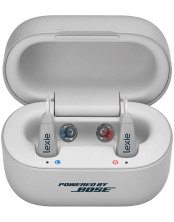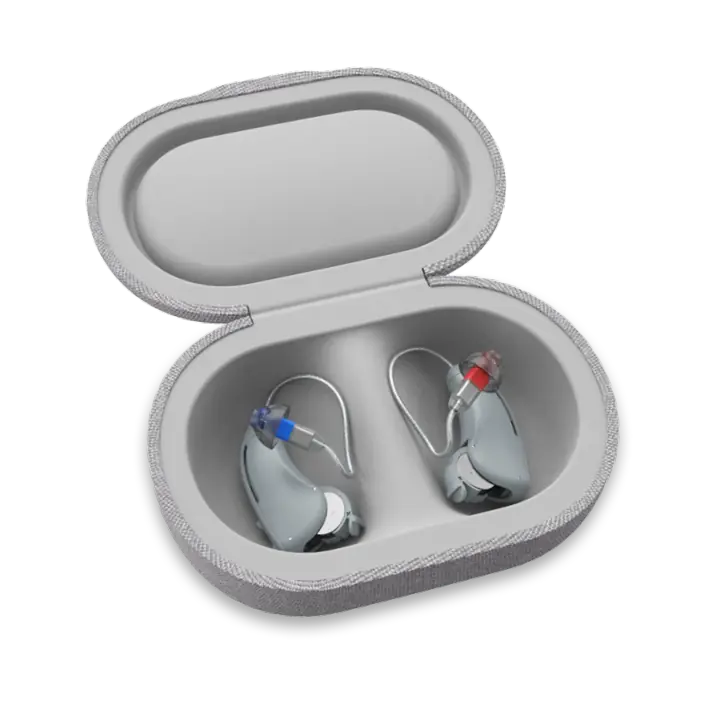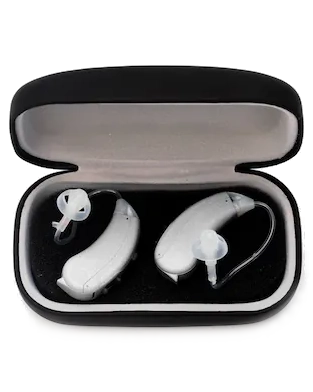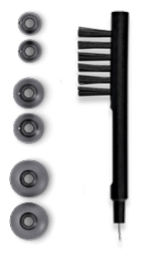The Types of Hearing Loss Explained
Published: March 6, 2023
Did you know that there are different types of hearing loss? Hearing loss is a common disorder that occurs when any part of the auditory (hearing) system is not working well. Millions of people around the world live with hearing loss and as a result, they are navigating through life by adjusting to a new way of living. The way that hearing loss affects a person and how it is experienced by them is unique to each individual and what influences that, in part, is the type of hearing loss they experience.
There are different types of hearing loss, each one can be caused by different factors and should be treated differently. To understand the different types of hearing loss that exists, it is helpful to first understand the different parts of the auditory system and how this system helps us to hear and understand sound.
Parts of the auditory system
The auditory system is made up of three main parts. These parts consist of the outer ear, the middle ear, and the inner ear. The outer ear is made up of the pinna (the visible part of the ear) and the ear canal (a passage that leads to the middle ear). The middle ear is made up of the eardrum (which separates the outer ear from the middle ear) and 3 tiny hearing bones. The inner ear contains the hearing organ, which is a small snail-like structure, as well as the hearing nerve, which is responsible for sending sounds from the inner ear to the brain.
How do we hear sounds?
The pinna is the visible part of the auditory system that most people refer to as the “ear”. It is positioned on either side of the head in order to capture sound from your surrounding environment. The sound that is captured by your ear then travels down the passage of the ear canal. The ear canal helps to direct sound to the eardrum. When sound reaches the eardrum, the eardrum begins to vibrate.
The eardrum is connected to your hearing bones. The vibrations caused by sound, travel along with these hearing bones, to the inner ear. In the inner ear, the sound reaches the hearing organ which helps process the sound. The hearing nerve sends the processed sound from the hearing organ to the part of the brain responsible for helping understand sound. Sound from our environment moves in a specific way, starting from the outer ear to the middle ear, along with the inner ear, and finally to the brain. Now that we have a better understanding of the different parts of the auditory system and how sound from our environment is interpreted by our brain, we can understand the different types of hearing loss, how they are caused and how they can be treated.

Types of hearing loss
There are 3 types of hearing loss. A conductive hearing loss, a sensorineural hearing loss, and a mixed hearing loss.
Conductive hearing loss
A conductive hearing loss occurs when the structures that form the outer ear and/or the middle ear, are not working well. This results in sound not being able to reach the inner ear so that it can be sent to the brain to be processed. A conductive hearing loss may be caused by a poorly formed or damaged pinna, ear canal, eardrum, and/or hearing bones that may not have formed well from birth or that were damaged from some type of trauma.
Other causes may include an infection in the middle ear. Occasionally, a build-up of wax may also cause conductive hearing loss. Where necessary, surgery can correct the poorly formed or damaged structures of the outer and/or middle ear, medication can be used to remedy the ear infection, and a hearing healthcare professional can remove excess wax from the ear.
Sensorineural hearing loss
A sensorineural hearing loss occurs when the sensory part of the inner ear, the hearing organ, and the neural part of the auditory system, which includes the hearing nerve, are not working optimally. As a result, the sound that has been received from the middle ear is not able to be properly processed by the inner ear and the brain, in order for us to make sense of it. Sensorineural hearing losses are common amongst older persons, as the sensory parts of the inner ear that help with the processing of sound, weaken with age.
It may also be caused by a poorly formed hearing organ and/or auditory nerve, regular exposure to loud sounds, specific medications that damage the sensory parts of the inner ear or it may have been passed down the family line. Sensorineural hearing losses cannot be treated with surgery or medicine. Instead, a behind-the-ear hearing aid that is customized to suit your hearing loss, may be helpful.
Mixed hearing loss
A mixed hearing loss occurs when parts of the outer/middle ear and inner ear are not working well together. The causes of conductive and sensorineural hearing loss combine to form a mixed hearing loss. For example, you may have lost your hearing due to excessive exposure to noise and may also have developed a middle ear infection.
This means that a conductive hearing loss is occurring at the same time as a sensorineural hearing loss, resulting in a mixed hearing loss. Treating a mixed hearing loss would be the same for conductive and sensorineural hearing losses and depends on the exact cause.






